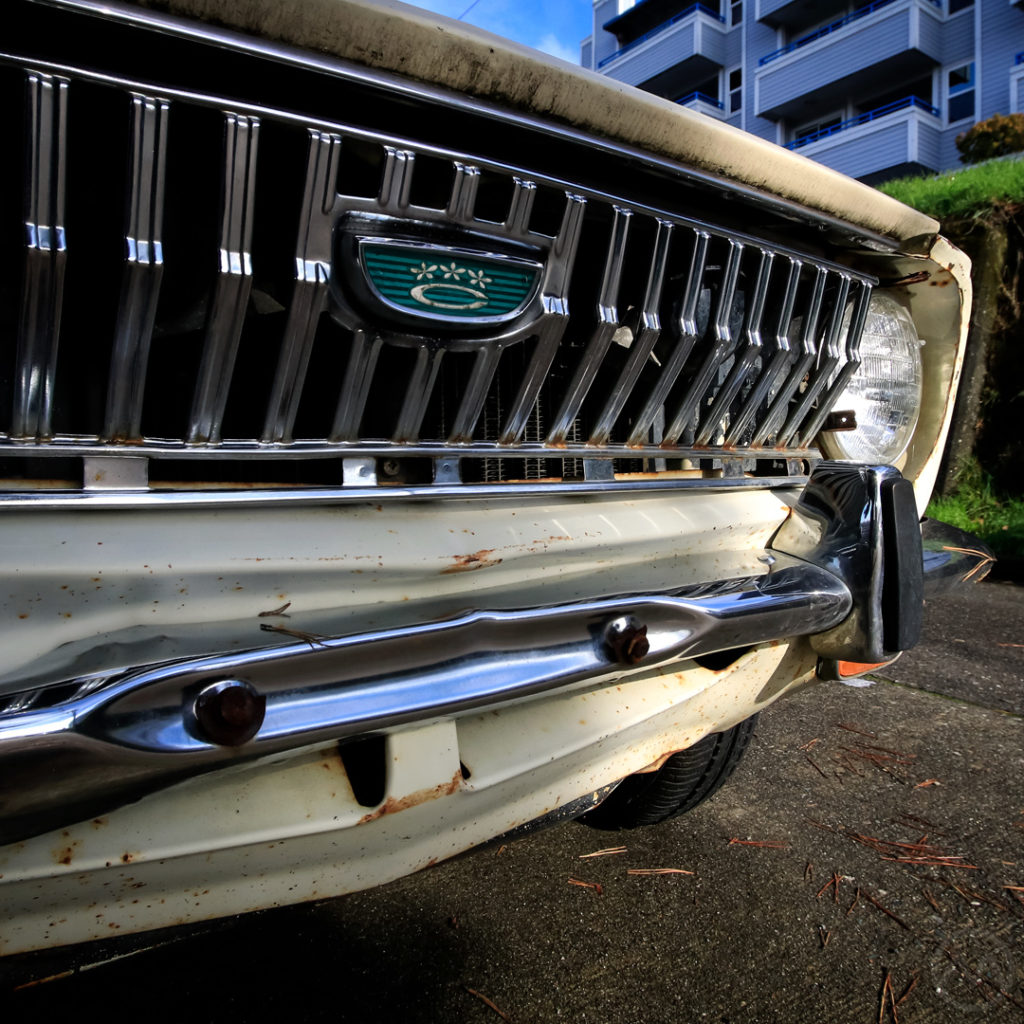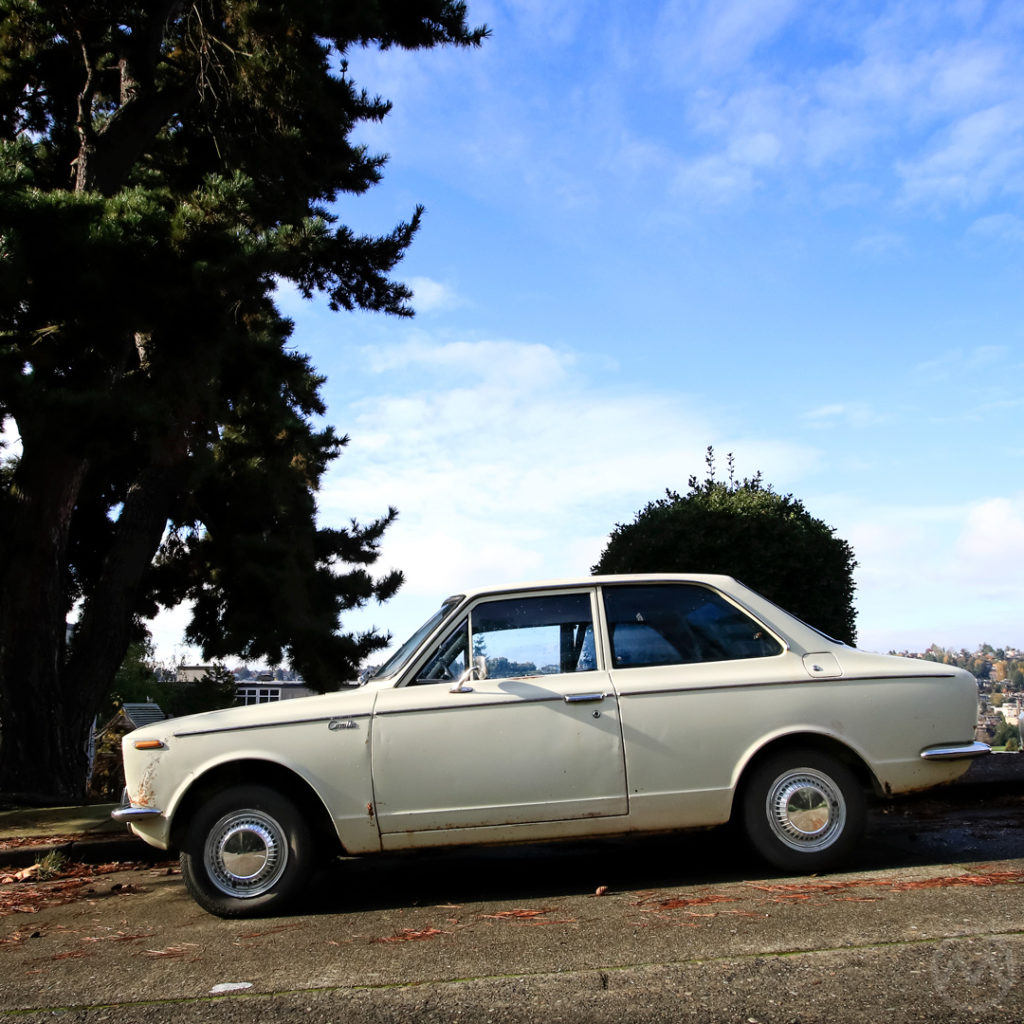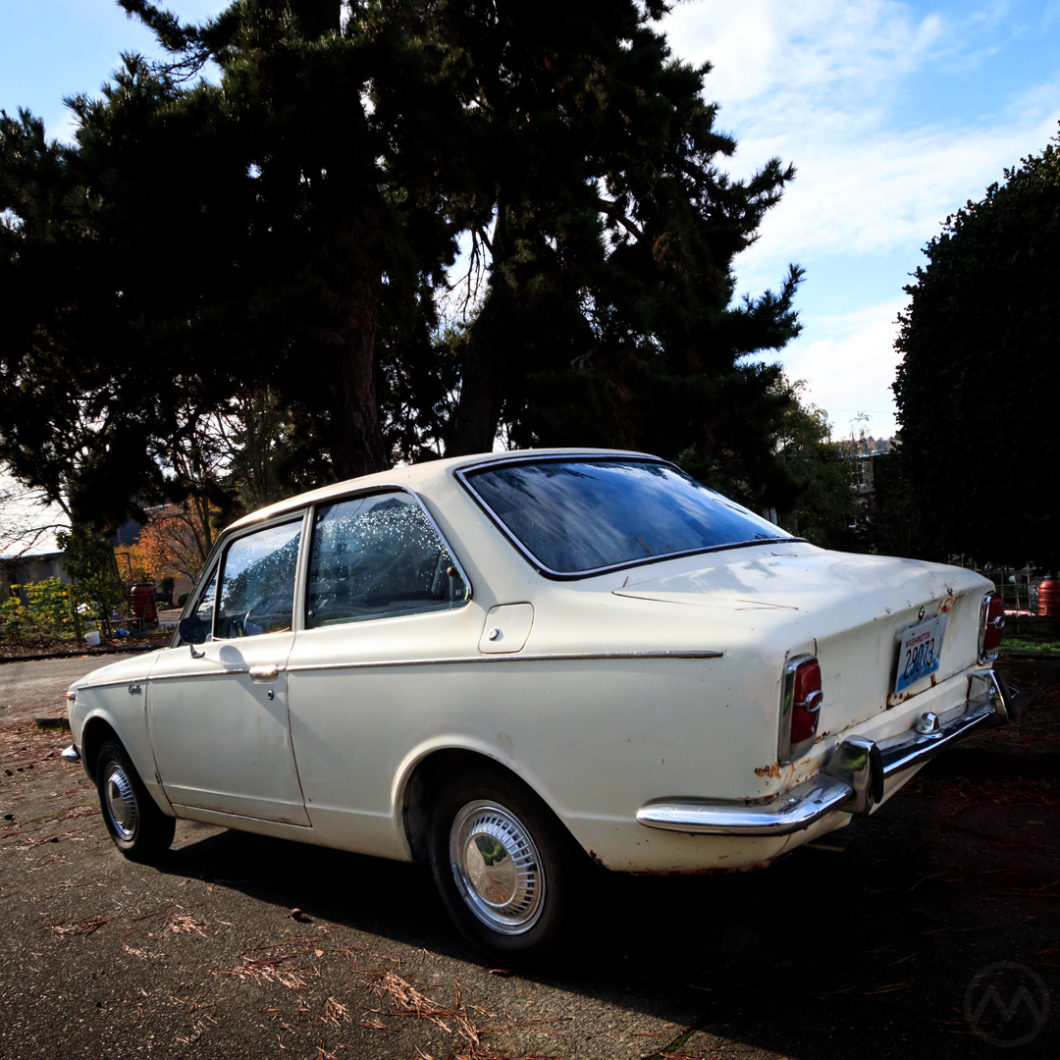There have been millions of Corollas since, but this humble little car is the original – the very first generation, the E10. Despite many technological changes, the Corolla has hued fairly close to the original idea for decades now.
Evolving out of Toyota’s experience with the 1961 Publica, the first Corolla was a car designed to give “most” people (a broad cross-section of Japanese buyers) “most” – approximately 80% – of what they wanted in a car. This recipe was purposefully designed to cut across a broad swath of buyers, and in 1960s Japan, there were more buyers than ever.
In the 1950s, cars were heavily outpaced by scooters, motorcycles, and light trucks in Japan. In 1956, the entire Japanese car industry only produced about 110,000 cars. Ten years later, it produced nearly 2.3 million.
The Toyota Publica UP10
At the end of the 1950s e rising wages and government policy had brought cars to the masses for the first time – mostly Kei cars like the Subaru 360. They were too small for a family, which led to another round of small, cheap cars epitomized by the 1961 Toyota Publica UP10, itself an outgrowth of a Government initiative to incentivize creating a “national car.”
This project, from the Ministry of International Trade and Industry, envisioned a car that weighed less than 880 lbs. (400kg), went at least 60 mph, got 70 mpg, could go 60,000 miles without a major service, and had room for a small family. It was an impossible spec, and most manufacturers didn’t line up to meet the challenge.
The Publica approximated these specs as best it could and was in part modeled on ideas like the 2CV – it was good to drive but very simple and bare bones. Toyota felt it was a cut above the Keis even if it was very basic and rolled out a new sales channel just for it – Toyota Public Store.
The Publica was designed under lead engineer Tatsuo Hasegawa, a highly-skilled former aeronautical engineer who’d been with the company since 1945. Hasegawa was justifiably proud of the popular and fun to drive Publica, but it never took off the way Toyota hoped.
It might have been bigger than a Kei and driven pretty well, particularly thanks to its light weight and double-wishbone front suspension, but it was basic – really basic – and it showed. Early cars didn’t even have an option for a heater or a radio.
Expectations changed quickly in the early 1960s as Japan’s red-hot economy grew under the Ikeda government – which did everything it could possibly do to stimulate industrial production and export. Prime Minister Ikeda was once referred to by French President Charles De Gaulle as “A transistor salesman” as a result of his efforts to reduce tariffs, but Ikeda didn’t mind.
Consumer Demand, Demanding Consumers
With more and more people being able to afford cars, and not just Keis, Hasegawa felt buyers would soon go from just being happy to have a car at all to demanding much more from their cars – and the Publica was proof of that.
In setting up the design of the Corolla in 1963-64, Hasegawa adopted a concept he referred to as “80 Points Plus.”
In no area could the car score less than 80 of 100 points in terms of customer expectations. Anything above was good, so long as it didn’t inflate costs. The car would be targeted as widely as possible and the “Toyota Public store,” would become the “Toyota Corolla Store.” This time no stone was left unturned in looking into what consumers actually wanted out of their cars.
Hasegawa later commented that in later years the Corolla would often draw criticism for being too bland form enthusiasts and fans of more sophisticated cars; but he opined that they were not the target audience. The car was for regular consumers and gave them most of what they wanted.
It also wasn’t Toyota’s only product – A year before the Corolla, Hasegawa’s teams and designer Shozo Sato had transformed his basic Publica into the wild Sports 800, a car as characterful and wild as the Corolla was subued and targeted.
But it wasn’t just “80 Points” with the Corolla, there was also the “plus.”
The “plus” part had to be a novel extra to give what might otherwise be a bland car – created to suit many tastes – some identity. In the case of the E10 it would be sporty handling and feel.
The front used MacPherson struts and the light, rear-drive car handled fairly well, though it wasn’t fast. It had four synchronized gears via a floor-shift between two bucket seats, instead of the usual three-on-the-tree, or it could be had with a two-speed automatic.

Beat to market by several months by Datsun’s similar-in-concept Sunny and Subaru’s very different (but visually similar) 1000, the Corolla emerged in the fall of 1966 with a slightly larger engine than the either. The extra displacement meant higher taxes but better performance, and that paid dividends with customers who, as Hasegawa predicted, were now asking for more.
Powered by 1.1 and 1.2L pushrod fours mated to 4-speeders or 2-speed autos, there was nothing spectacular about these powerplants but like the car as a whole, they were extremely durable.
Deming and Toyota
Here a debt of gratitude was owed to American W. Edwards Deming’s process improvement and quality control techniques, which Toyota had enlisted in 1961 and used to great effect by 1965.
The first car to really benefit from the new ideas was the RT40 Corona, but the Corolla wasn’t far behind – it was built in new facilities with the system baked in.
Toyota’s lean production and quality control systems were essentially forged in this era from the basis of Deming’s ideas. Toyota found that not only did it make the cars of better quality, it could also be used to manufacture them faster and cheaper.

The Corolla was an immediate hit. At first only a two-door sedan, a four-door and a wagon were added later, as was a larger 1.2L engine (in Japan, with multiple states of tune).
The Corolla got a fastback companion, the Sprinter, sold through yet another channel in 1967, and U.S. exports began in 1968. Although Toyotas were already well known to the public in America, at least on the west coast, the Corolla made Toyota a powerhouse. From selling about 40,000 cars in the U.S. in 1966, it sold 208,000 in 1970.
Just two years in, the upstart Corolla was second only to the VW Beetle in U.S. Import sales – and it left a lasting impression of quality even if the body gradually dissolved. It’s main weakness was rust, which was also true of most of its rivals.
The original design carried on into the fall of 1970, having been replaced that spring by the new E20.

